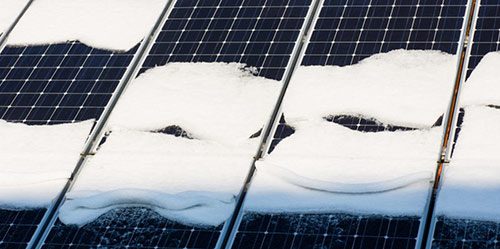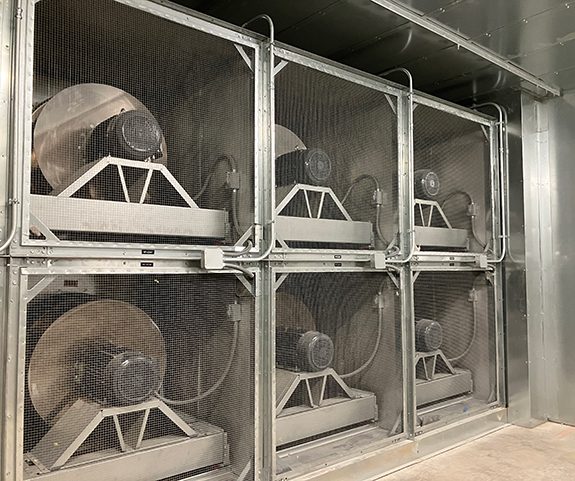Electrical designers must be conscious of environmental factors that will impact electrical equipment, including temperature, wind, snow, and so on. This is especially critical for photovoltaic (PV) installations where a large portion of the system will be subjected to varying weather conditions.
PV installations are feasible in most locations as long as the designer understands, and compensates for, the environmental aspects of each installation.
PV designers should be conscious of the following during their initial design.
Areas susceptible to heavy snowfall
- Heavy snow can place serious strains on solar panels. The strain is typically measured in pounds per square foot (psf) or Pascals (Pa). Historical snowfall patterns should be reviewed to determine which solar panels can withstand the maximum anticipated snow load for that location.
- The correct solar panel and inverter tilt angle can combat the accumulation of snow. A fixed, roof-mounted solar energy system should generally be installed at an angle above 40° to allow for snow runoff.
- If accumulation of snow is still an issue, a routine procedure should be set in place for removing accumulating snow. (Of course, such a procedure relies on having available personnel to remove the snow.)
- Each site should be reviewed to determine the ideal panel tilt angle, availability of snow removal, and potential impact of snow on the final PV output.
Areas with high wind
- The roof installation should be reviewed for the solar panel tilt angle, parapet height, array spacing, and system roof penetrations. This analysis will help the designer understand the wind load characteristics on the system and determine if the installation will be susceptible to an uplift condition.
- An uplift condition occurs when the wind blows parallel to the roof structure, causing the air pressure above the roof to be lower than the air pressure below, which creates a dynamic of “lift.” Uplift conditions should be reviewed in conjunction with the wind exposure category to allow a good structural analysis of the roof-mounted PV system.
- The wind exposure category reflects the characteristics of ground surface irregularities at a site. The rougher the surface, the lower the multiplier that converts wind speed into pressure.
- The building code ASCE/SEI 7, Maximum Design Loads and Associated Criteria for Buildings and Other Structures, provides further guidance on analyzing the wind exposure category, minimum design loads for buildings associated with wind, and all other dead and live loads.
Areas with high temperatures
Thermal expansion can cause harmful thermal stresses on roof-mounted electrical systems because materials expand and take up more space than initially accounted for. Thermal conditions can be accommodated based on guidance from the International Building Code (IBC) and related industry standards for PV installations. Potential strategies include:
- Splitting larger arrays into small sub-arrays.
- Providing thermal expansion fittings in straight electrical conduit runs.
- Avoiding racking systems that cross over the roof’s expansion joints.
Existing and new roofs should always be analyzed to ensure they have the structural capacity to support the PV system, including associated ballast, conduit, wire, other equipment, and all associated live loads introduced (seismic, wind, snow drift, and so on).
A short blog such as this cannot provide comprehensive guidelines, but it does offer key points for PV designers to consider when analyzing site-specific conditions and modifying their designs to best optimize a PV system’s output. The NABCEP PV Certification Study Guide provides a wealth of useful information.
Author: Nate Powers, PE, Associate, GBA Wisconsin




